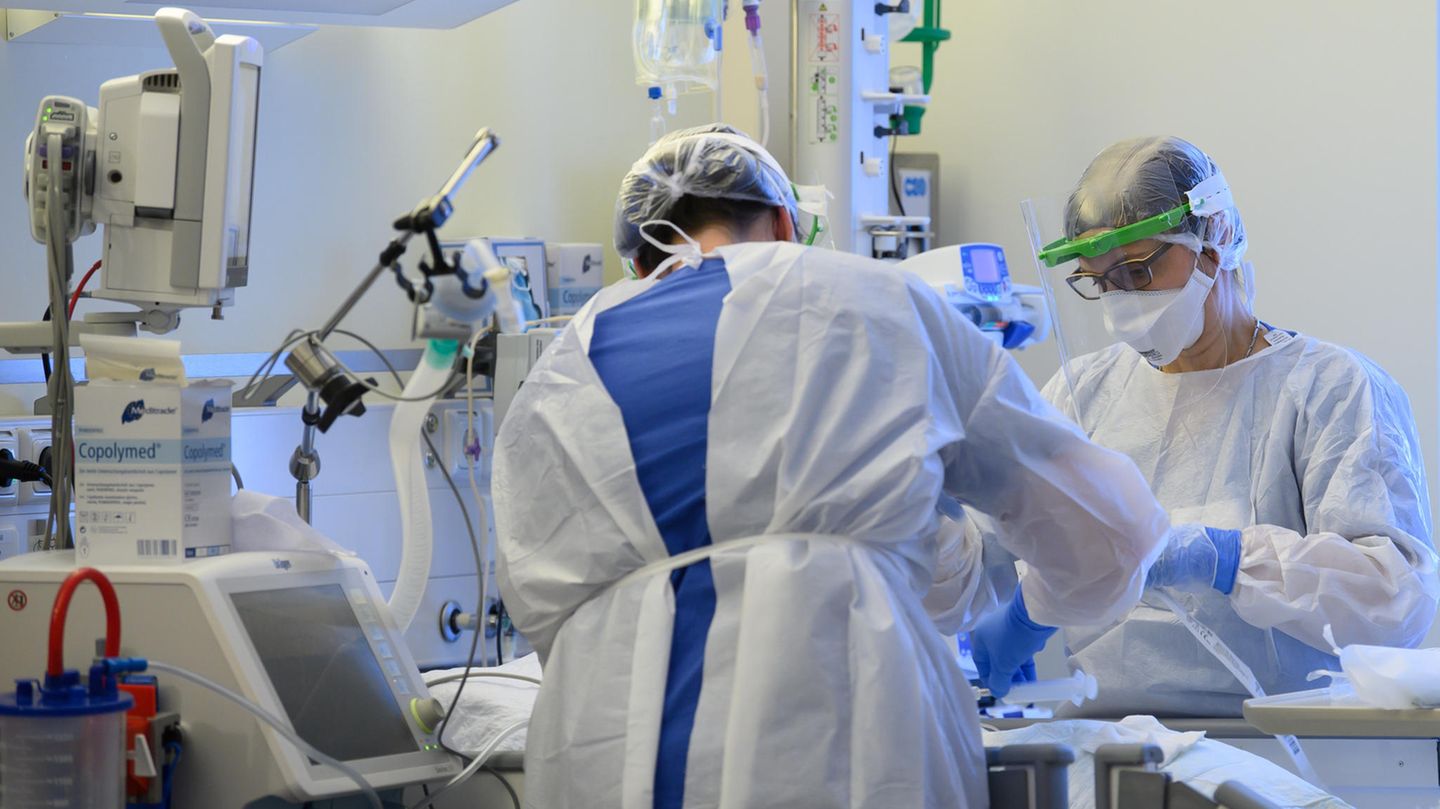The new corona variant Omikron is considered to be more infectious than its predecessors. Because the number of cases is increasing every day in the new year, some industries fear staff shortages. An overview.
Is it just the calm before the storm or are fears about the rapidly spreading Omicron variant not materializing after all? For weeks, politicians have been very concerned about possible failures in important areas of the country’s infrastructure. The federal and state governments will discuss this again this Monday. Contact restrictions were tightened even before the turn of the year. In addition, isolation and quarantine requirements have also been relaxed so that not too many staff are absent at the same time. Some areas are now reporting problems, others are not.
Corona: Ease of energy and water supply
Energy and water suppliers are currently describing the situation as “still relaxed”. According to the Federal Association of Energy and Water Industries, the situation is regularly reassessed, especially for control rooms and fault clearance services. “Especially for core key personnel, special precautionary protective measures have been in place since the beginning of the pandemic to prevent the entry and spread of infections.” The emergency plans include shift plans with longer working hours, contact bans between teams and the reactivation of recently retired employees. So far, however, no measures have had to be tightened.
“Currently, 90 percent of our member companies assume that they will continue to operate over the coming weeks, even if 30 percent of the employees should be absent,” said Ingbert Liebing, the general manager of the association of municipal companies, whose members include energy and water companies also operate garbage collection, street cleaning and telecommunications systems. If the number of failures was higher, he advocated allowing the use of symptom-free infected people in key positions. However, Liebing emphasized: “At the moment, the Omikron variant does not pose an increased risk for supply and disposal security.”
Public transport: “Operation runs largely smoothly”
According to the Association of German Transport Companies (VDV), only the Berliner Verkehrsbetriebe (BVG) have restricted local transport. The number of infections is particularly high in the capital. The VDV announced on request that other transport companies with restrictions on services were not known. At Deutsche Bahn, according to union information, sick leave is now higher than usual. However, there are still no staff shortages that would lead to a restriction of train traffic. “Currently, operations are running quietly and largely smoothly,” said the group.
No “extraordinarily high levels of sick leave” in logistics
So far, there have been no alarm reports from the logistics industry: There are no exceptionally high levels of sick leave,” said a spokesman for the Federal Association of Forwarding and Logistics. “The forwarding companies are now extremely experienced in dealing with the ongoing pandemic, so that despite thin staffing levels for the foreseeable future, there are no major supply-related failures to be feared for the population.”
Staff shortages in the clinics
Less positive feedback comes from the clinics. There are currently complaints about above-average staff shortages. Almost three quarters of the hospitals report higher staff shortages in patient-related areas than is usual at this time of year, according to a survey by the German Hospital Institute of more than 240 clinics in the middle of the week. The chairman of the German Hospital Society, Gerald Gass, told the German Press Agency: “The data suggest that the significantly higher staff shortages are due to omicron infections among hospital employees.”
Every second hospital stated in the survey that due to the lack of staff it is currently not able to fully operate its beds in the general wards, almost every second says this about its intensive care units. According to the hospital company, sick leave is particularly high among nursing staff.
If the number of corona infections continues to rise so rapidly, the medical organization Marburger Bund sees the clinics at their limit in just a few days. “By the beginning of February at the latest, it will be very cramped in hospitals across Germany if the number of infections continues to rise at this rate,” said Chairwoman Susanne Johna to the newspapers of the Funke media group.
“Permanent state of emergency” in schools
A few days ago, in an interview with “Welt”, the President of the German Teachers’ Association spoke of a “permanent state of emergency” in most schools, of “significantly increased numbers of infections” and increased quarantine measures for teachers and students. The latest figures from the Conference of Ministers of Education on the corona situation in schools in the week from January 10th to 16th, when all federal states were back to school after the Christmas holidays, only partially confirm this.
According to this, at a good 28,000 schools and vocational schools throughout Germany with around 10 million students, for whom feedback from the federal states was available, 77,000 corona cases were known among students, 10,000 fewer than before Christmas, and an additional 111,000 quarantine cases, the same many as before the Christmas holidays. There was an increase in the almost 900,000 teachers included in the statistics: 5900 corona and 3700 quarantine cases were known. Before Christmas it was 5300 and 2700.
Trade prepares for bottlenecks
In the German retail trade, the effects of the Omikron wave on sick leave have so far been limited. “The companies are not yet telling us about an increased loss of staff due to corona diseases,” said the chief executive of the German Trade Association (HDE), Stefan Genth, the dpa. But preparations have been made, such as deputy regulations and rotation models.
Source From: Stern
Jane Stock is a technology author, who has written for 24 Hours World. She writes about the latest in technology news and trends, and is always on the lookout for new and innovative ways to improve his audience’s experience.




